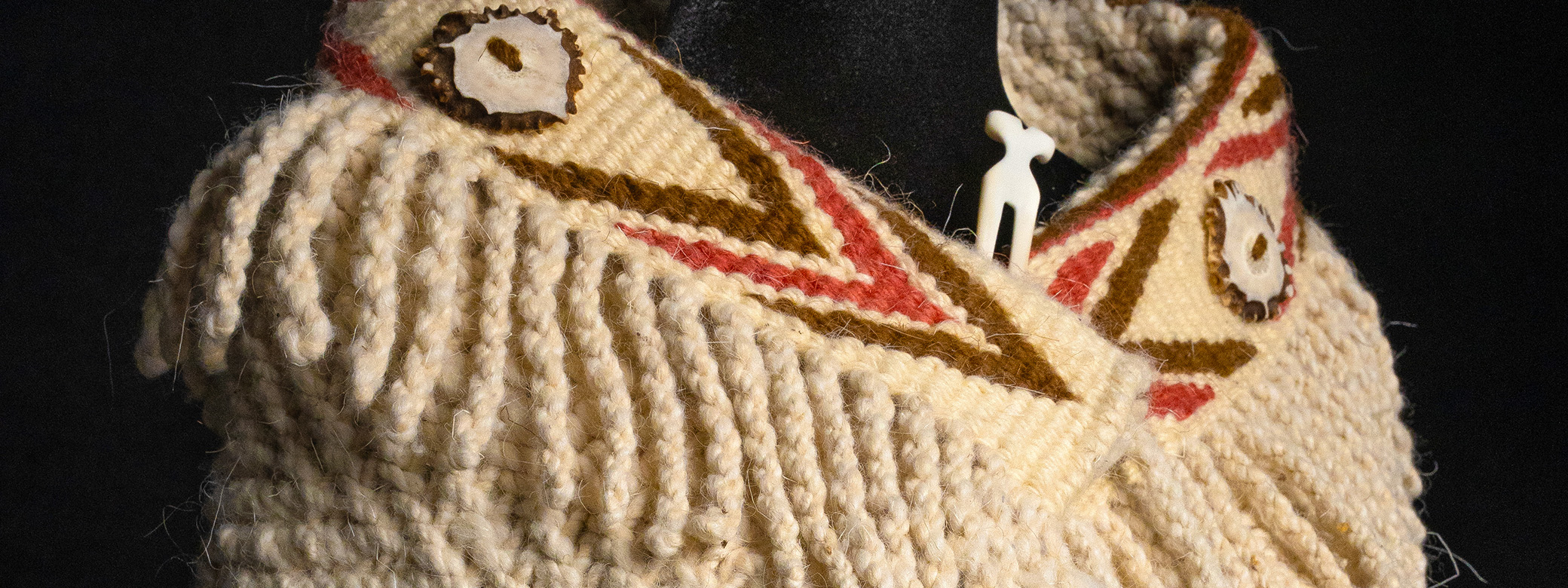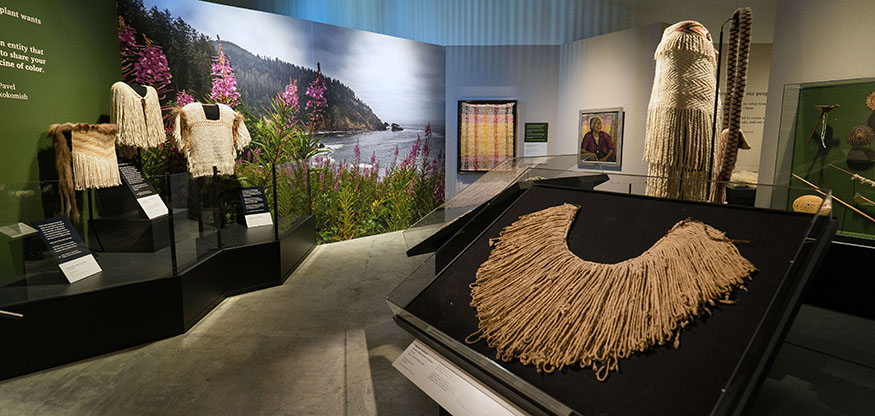
Mountain goat wool. Dyes foraged from the land. Special ceremonial regalia. Many wool weaving traditions of the Coast Salish peoples were almost lost to history when the Puget Sound region was colonized in the nineteenth century. But in recent years, dedicated weavers at the Coast Salish Wool Weaving Center (CSWWC) have revived their communities’ traditional weaving techniques.
The weavers are sharing these traditions through an exhibit, “Woven in Wool: Resilience in Coast Salish Weaving,” on view at the UW’s Burke Museum of Natural History and Culture through August 30, 2026.
The exhibit showcases both historical and contemporary woven items from Coast Salish communities and explains the seasonal cycle of weaving, from gathering materials and spinning wool to dyeing with natural ingredients and weaving intricate designs. Coast Salish weavers offer insights — including the importance of weaving to Coast Salish identity — in exhibit displays and audio clips.
A quote from Chief Janice George (Squamish) in an introductory display sums up the importance of the weavers’ work: “If we lose why we’re weaving, if we lose the meaning of it, if we lose the techniques of it, then we are losing the foundation of what our people have always been.”
Inspired by Ancestral Weavings
Several CSWWC board members had a relationship with the team at the Burke Museum’s Bill Holm Center prior to partnering for this project. They had spent time with Coast Salish items in the Burke collection and experienced firsthand how the museum respects and advocates for the interests of Indigenous communities. That led CSWWC executive director Susan Pavel to approach Burke curator Katie Bunn-Marcuse about co-curating an exhibition.
“For me, co-curation is a basic ethic,” says Bunn-Marcuse, curator of Northwest Native American Art, director of the Bill Holm Center, and UW associate professor of art history. “It’s always how I’ve done my curatorial work. When you curate collaboratively, there are so many skillsets that everybody brings to the table. You can build something that’s so much more robust and beautiful because there’s room for all these different abilities to coming shining through.”

The Burke secured a grant from the Terra Foundation for American Art for planning and exhibition support, which made it possible for the weavers to visit with centuries-old Coast Salish weavings in several museum collections, including Chicago’s Field Museum, New York’s American Museum of Natural History, Smithsonian museums, and several museums in British Columbia in addition to the Burke collections. Those behind-the-scenes visits were transformative for the weavers and foundational for the exhibition.
“My first trip was to the Field Museum and I was beside myself,” recalls Gail White Eagle (Muckleshoot). “I was so emotional that I finally got to meet ancestral items, to see that these things really did exist a long time ago. It was like a bridge opened up between the past and present. I wanted to make everything I saw.”
Spiritually I am moved and grounded more with my ancestors because I know the work it took for them to make these things.
Some of those ancestral pieces are in the Burke exhibit, along with new weavings that the pieces inspired. All the new works were created using traditional materials and construction methods.
That was no small feat. Coast Salish wool traditionally came from woolly dogs (a now-extinct breed) and mountain goats. The 21st-century weavers foraged in mountain-goat habitat for wool the goats shed, and then carded, spun, and dyed the wool using traditional methods and materials.
“We want this to be a living culture rather than, ‘This used to be how we did it,’” says White Eagle, who has found meaning in weaving with mountain goal wool, using traditional techniques. “Our ancestors depended on the mountain goat and the woolly dog to provide warmth and ceremonial items. Spiritually I am moved and grounded more with my ancestors because I know the work it took for them to make these things.”
The Learning Continues
Joining Bunn-Marcuse and Coash Salish weavers on the exhibition team was Bethany Palkovitz, a UW doctoral student pursuing a Ph.D. in art history and a graduate certificate in American Indian and Indigenous Studies. Palkovitz had been taking UW classes in Lushootseed, a language of Coast Salish peoples around Puget Sound, and found a mentor in Lushootseed professor Tami Hohn (Puyallup), assistant teaching professor in the Department of American Indian Studies. Hohn encouraged Palkovitz’s connections with Coast Salish weavers, which led Palkovitz to learn weaving with members of the CSWWC board.
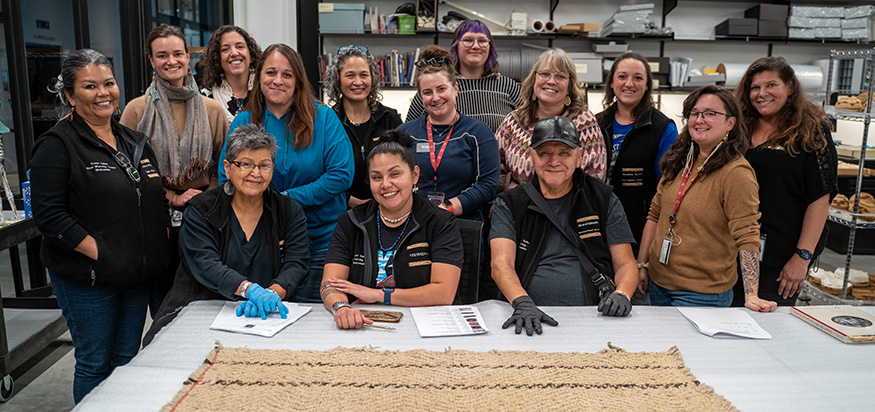
Those experiences, plus a previous role as curatorial assistant at the Smithsonian Institution, made Palkovitz a valued member of the Woven in Wool exhibition team. Working with Hohn and Lushootseed educator Nancy Jo Bob (Lummi, Duwamish), Palkovitz constructed and implemented the Lushootseed labels for the exhibit, ensuring that the appropriate Lushootseed terminology was included. There was much for Palkovitz to learn from Hohn and Bob, and from the weavers and Bunn-Marcuse, particularly given the complex issues raised by the exhibition.

“There are all sorts of considerations that come into play [in this exhibit] that aren’t simple, because colonization wasn’t simple,” Palkovitz says. “The ways in which people are impacted by how their belongings are displayed and discussed is not simple either. I bring certain art historical skills to the table, but I could not have done this work without teachings from the weavers, from Tami, from Katie, and from all of the incredible American Indian Studies scholars I’ve been able to work with at the UW over the last four years.”
More UW students are now delving into the nuances of “Woven in Wool” thanks to an art history course offered by Bunn-Marcuse, titled Women Artists of the Northwest Coast. “The course is about more than just the exhibit — it’s about women’s art across the coast and across time — but students are spending time at the exhibit and writing about it,” says Bunn-Marcuse. “Weavers from the Coast Salish Wool Weaving Center are meeting with the class as well.”
Weavers across the region also continue to find creative inspiration from the exhibit. Palkovitz, attending a weaving workshop in the Tulalip community, recently overheard people talking excitedly about items on view at the Burke.
“They were telling each other, ‘I saw things that I want to make. I saw techniques that I want to learn,’” Palkovitz recalls. “And so, the impact of this work will reverberate for years and years. Even when the belongings are packed up at the end of the exhibit, they’ll still be here in the impression they leave upon the land and its people.”
More Stories
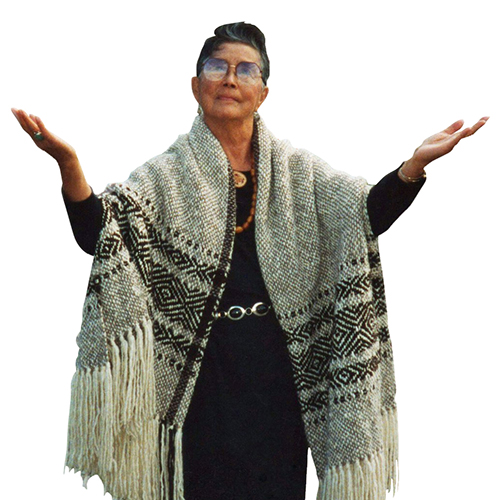
A Healing Heart Returns
In February, the UW Symphony will perform a symphony that Coast Salish elder Vi Hilbert commissioned years ago to heal the world after the heartbreak of 9/11. The symphony was first performed by the Seattle Symphony in 2006.

Need a break from holiday movies? Try these
For those wanting a break from holiday movies, Cinema & Media Studies faculty and grad students offer suggestions.
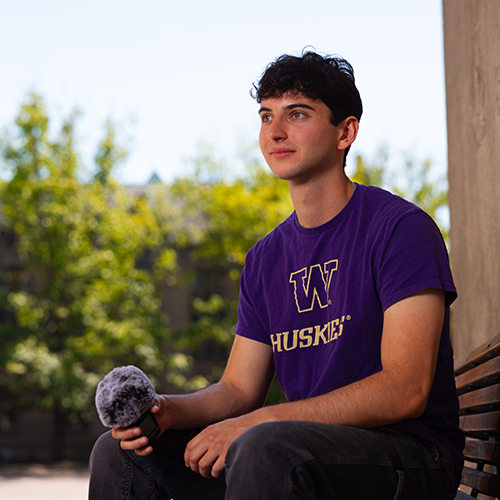
Capturing the Sounds of Campus
With "University of Washington Soundscape," ethnomusicology and international studies major Leo Freedman has created an audio experience of the UW campus.
